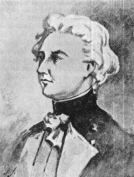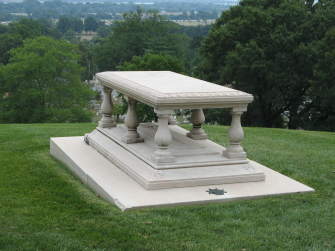
Pierre Charles L'Enfant
Major US Army, Designer of Washington D.C.
Pierre Charles L'Enfant was born in Paris, France on 2nd August, 1754 to a wealthy family of artists. He studied art under his father, Pierre L'Enfant, at the Royal Academy of Painting and Sculpture in Paris between 1771 and 1776.
Pierre L’Enfant senior was “Painter in ordinary to the King in his Manufacture of the Gobelins.” The painter, whose wife was Marie Charlotte Leullier, daughter of a French military officer, specialised in landscapes and battle-scenes. Born in Anet, in 1704, on a farm which he bequeathed to his children, he was a pupil of Parrocel and had been elected an Academician in 1745. Some of his pictures are at Tours while others are at Versailles, depicting many French battle victories
In 1777 Pierre Charles L'Enfant left France to join the American Revolutionary Army where he fought under George Washington. He'd watched American colonists declare their independence from England and he decided it was time for him to act. He travelled to America with the Marquis De Lafayette.
Led by the same democratic spirit that inspired the colonists, L'Enfant became one of the first French volunteers to enlist in the Continental Army. After the war ended, L'Enfant found work first in New York City remodelling the old City Hall for the meeting of the First Congress, then helping with the design of Philadelphia's Federal Hall. Congress rewarded him by appointing him Major of Engineers in 1783. L'Enfant designed the medal and diploma of the Society of Cincinnati, an association of former Revolutionary officers. Upon his return to Paris, he helped organize a French branch of the society.
L'Enfant returned to America in 1784 and settled in New York City in where he established himself as an architect. In March 1791 President Washington picked him to design the nation's new capital city. The plan of the city of Washington is based on principles employed by Andre Le Notre in the palace and garden of Versailles, where L'Enfant's father had worked as a court painter, and on Domenico Fontana's scheme (1585) for the replanning of Rome under Pope Sixtus V.
After a series of disagreements and personality clashes with the three commissioners appointed by Washington to oversee the project, L'Enfant was dismissed by his mentor on 1st March 1792 after being responsible for removing without permission, the house of Daniel Carroll, an important resident in the city. L'Enfant was not paid for his services. He later tried to obtain $95,500 for his work. Congress gave him what it deemed a suitable fee — about $3,800.
In 1812, L'Enfant was offered a position as Professor of Engineering at West Point but declined. He died in poverty on 14th June 1825 with personal effects valued at $44 and was buried at the farm of a friend, William Dudley Digges, in Prince George's County, Maryland.
In 1901, the McMillan Commission used the original design of L'Enfant as the cornerstone of its 1902 report, which laid out a plan for a sweeping National Mall. His adopted nation finally recognized his genius and L'Enfant was re-interred in Arlington National Cemetery with a ceremony at the U.S. Capitol Rotunda, on April 22nd 1909, and honoured with a monument at his grave in 1911. He is buried on a hill overlooking the city he designed.





